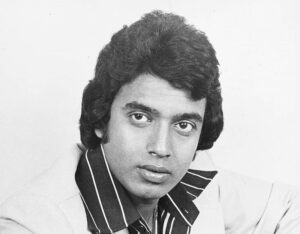
Mithun Chakraborty—a name that resonates with style, swagger, and an unrelenting spirit—has added another shining jewel to his crown: the Dadasaheb Phalke Award, India’s highest honour in cinema. This recognition cements his place among the immortals of Indian cinema. Prime Minister Narendra Modi lauded the actor, calling him a “cultural icon” who has captured the hearts of multiple generations.
Prime Minister Modi captured the nation’s sentiments perfectly: “Delighted that Shri Mithun Chakraborty Ji has been conferred the prestigious Dadasaheb Phalke Award, recognizing his unparalleled contributions to Indian cinema. He is a cultural icon, admired across generations for his versatile performances.”
The news, officially announced by Information & Broadcasting Minister Ashwini Vaishnaw, has stirred excitement across the nation. The award will be presented during the 70th National Film Awards ceremony on October 8, 2024. The announcement sent waves of joy across the country, but perhaps none felt it as deeply as Mithun Da himself.
“I became speechless after getting such a prestigious award… I don’t know how to express this. I can’t cry, I can’t smile either,” he said, with a voice filled with raw emotion. “I dedicate this award to my family and fans across the world.”
A Star Is Born: From Struggle to Stardom
Mithun Chakraborty’s life story is a true rags-to-riches saga. Born into a modest home in Jorabagan, North Kolkata, he battled against all odds to chase his dreams. It wasn’t easy—especially when he burst onto the scene at a time when Amitabh Bachchan reigned supreme as Bollywood’s megastar. Yet, Mithun didn’t let the shadow of the “Angry Young Man” cloud his journey. Instead, he created his own path to stardom.
His breakthrough came with Mrinal Sen’s “Mrigayaa” (1976), where he delivered a performance so raw and powerful that it won him a National Award. However, Bollywood wasn’t ready to embrace him with open arms just yet. For a man who would one day become known as a national icon, the early days were fraught with struggles. He chose to steer clear of the rat race and carve out a unique road to success.
In an era dominated by big banners and star-studded blockbusters, Mithun became the king of B-grade cinema, films that might not have had the glitz of Bollywood’s big-budget productions but were wildly successful nonetheless.
The Unstoppable King of B-Grade Movies
Throughout the 1980s and 1990s, Mithun became a one-man film factory. He wasn’t just an actor—he was a brand, a guarantee of profitability. He churned out movies at breakneck speed, once famously saying, “Other stars give the starting date of a film. I give the completion date.” Producers and distributors trusted him implicitly. In an industry where films often languished in production, Mithun delivered on time, every time.
“In the film industry, everybody is gambling. But if you do business, you don’t gamble,” Mithun once remarked. His films, often shot on tight budgets and fast timelines, were goldmines for producers. He built an empire on the edges of mainstream Bollywood and thrived, becoming a hero to the masses in a way that few others could.
And then, just when the world thought it had Mithun figured out, he transformed once again.
Reinvention: From Disco Dancer to Cinematic Legend
In the 2000s, Mithun evolved, proving that his talent wasn’t bound by genre or budget. His portrayal of a newspaper tycoon in Mani Ratnam’s “Guru” (2007), inspired by the real-life legend Ramnath Goenka, earned him critical acclaim. In “Golmaal 3” (2010), he reprised his “Disco Dancer” persona with a twist, delivering a performance that blended nostalgia with comic flair.
Mithun was no longer just the star of cult classics and mass-appeal blockbusters—he was a force of nature, demonstrating his versatility with every role. Even today, as a judge on Dance India Dance, his influence over Indian pop culture remains as strong as ever, resonating with both young and old.
A Bengali Legacy of Greatness
Mithun’s name is now forever etched in the annals of Indian cinema, alongside Bengal’s greatest legends. With this award, he joins a prestigious group of Dadasaheb Phalke Award recipients from his home state, including Satyajit Ray, Mrinal Sen, Manna Dey, and Soumitra Chattopadhyay.
But for Mithun, this recognition is more than just an honour. It’s the culmination of a lifetime spent fighting against the odds, a journey from the narrow streets of Kolkata to his sprawling 46-acre farmhouse on Madh Island. His rise to superstardom is the stuff of Bollywood dreams but also grounded in a reality that millions of his fans can relate to—an unyielding determination to never give up.
The Ultimate Icon: Loved Across Generations
At 70, Mithun Chakraborty is still going strong—a testament to his resilience, talent, and ability to adapt to the times. Whether it’s his iconic dance moves from “Disco Dancer”, his heartfelt performances in Bengali cinema, or his powerful roles in Bollywood, Mithun’s legacy transcends genres and generations.
He’s not just a superstar—he’s a cultural phenomenon. His journey from a struggling actor trying to make his mark in Bollywood to becoming a national treasure is proof that hard work, perseverance, and belief in oneself can move mountains.
As we celebrate this incredible achievement, one thing is clear: Mithun Chakraborty is more than just a cinematic legend—he’s a living inspiration, embodying the spirit of Indian cinema in all its glory.